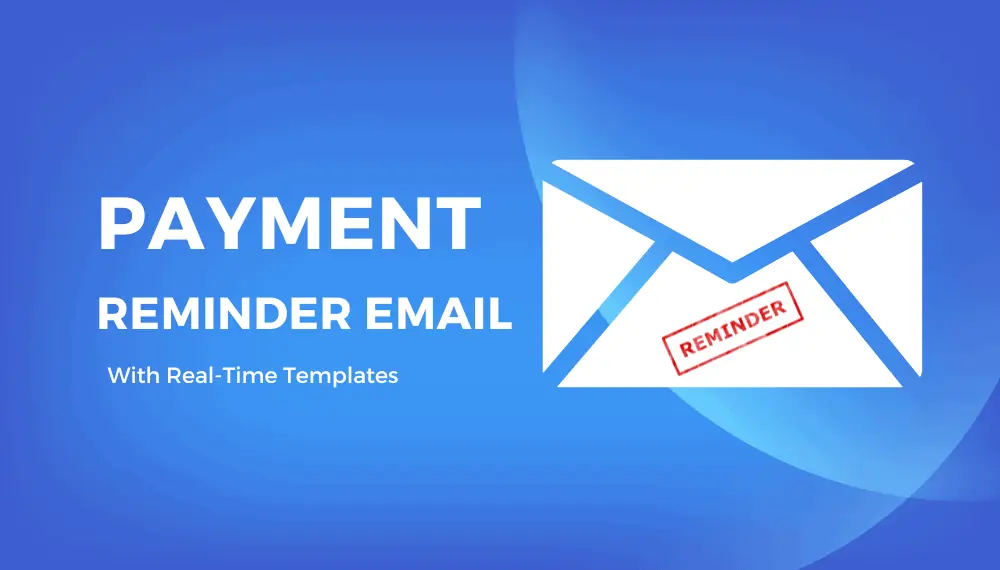Sending friendly payment reminder email or letter is an integral part of any business. This reminder helps ensure you get paid what you rightfully earned and also helps you maintain a good relationship with your clients.
Nowadays, with technology making things sending payment reminder emails or letters have more or less become automated. Let us show you how to create a compelling payment reminder email that will have a positive impact.
These emails are designs to ensure that the customer is encouraged to send you the due payment. These emails will never harm the client-customer relations. Rather the customer will appreciate your professional and positive approach to get the due payment.
What is a Payment Reminder Email?
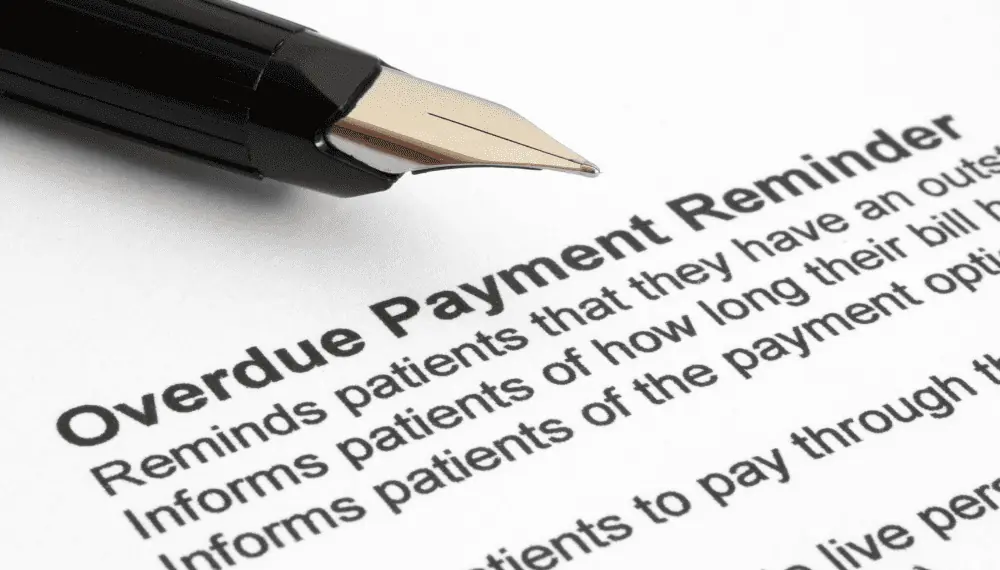
A payment reminder email is a communication sent to clients or customers who owe business money for products or services rendered. It serves as a polite and friendly nudge to remind them of an upcoming or overdue payment. In the fast-paced and digitally connected world, payment reminder emails have become a vital tool for businesses to maintain a healthy cash flow and ensure timely payments.
The content of a payment reminder email typically includes essential details such as the invoice number, the amount owed, the due date, and any specific payment instructions or methods. The tone of the email is crucial; it should be professional yet cordial to maintain a positive relationship with the client.
A well-crafted payment reminder email conveys empathy and understanding, acknowledging that delays can happen for various reasons. It allows for the possibility that the oversight might be unintentional, preventing any potential strain on the client-business relationship.
Payment reminder emails often offer a convenient option for settling the payment, such as providing a direct link to an online payment platform or offering guidance on available payment channels. This ease of payment encourages clients to resolve the outstanding balance promptly.
By employing payment reminder emails, businesses can efficiently manage their accounts receivable, minimize payment delays, and improve overall cash flow. It also demonstrates a level of professionalism and organization, instilling confidence in clients regarding the business’s credibility and reliability.
What to Include in a Payment Reminder Email?
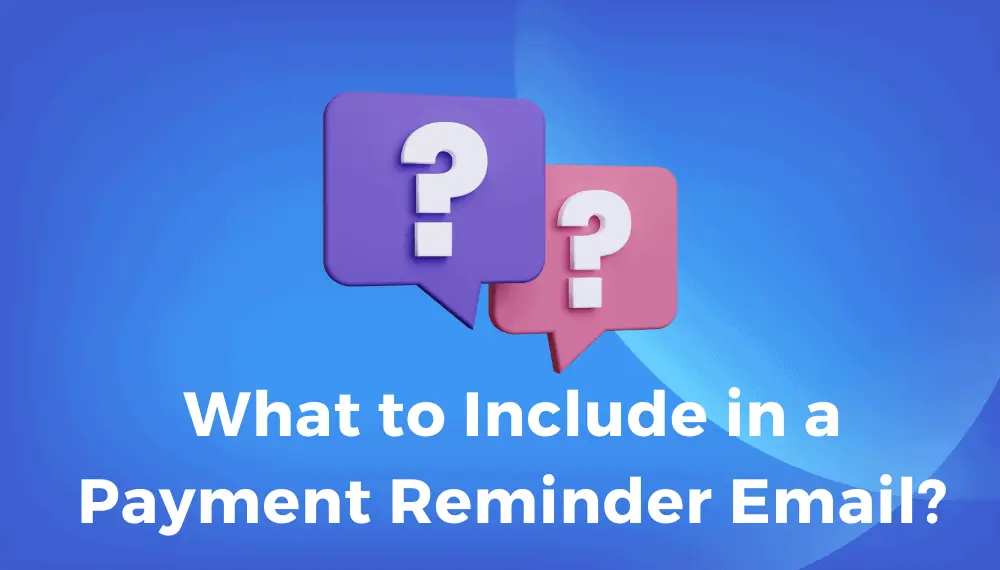
Begin the payment reminder email with a warm greeting and a genuine expression of appreciation for the client’s business. Acknowledge the relationship and the value they bring to your company.
Invoice Details
Clearly state the essential information related to the invoice that is overdue or nearing its due date. Include the invoice number, issue date, due date, and the total amount owed. This section serves as a quick reference for the client to identify the specific invoice in question.
Payment Status
Politely inform the client that the payment for the mentioned invoice is currently outstanding. Use a neutral tone to avoid any confrontational language. Mention that you understand that oversights can happen and give them the benefit of the doubt.
Friendly Reminder
Emphasize that the purpose of the email is merely to provide a friendly reminder about the pending payment. Reiterate that your intention is not to cause any inconvenience or discomfort.
Payment Options
Provide clear and convenient payment options to make it as easy as possible for the client to settle the outstanding amount. Include various methods such as online payment links, bank transfer details, and information on how to make check payments if applicable.
Contact Information
Include your contact details, such as a phone number and an email address, so the client can reach out if they have any questions or need further assistance with the payment process.
Gratitude and Professionalism
Express gratitude once again for their business and highlight your commitment to maintaining a positive relationship. Reinforce your dedication to providing excellent products or services and assure them of your continued support.
Deadline Consideration
Politely request the client to make the payment on or before the due date to avoid any late fees or disruptions in services. Emphasize the importance of timely payments for both parties.
Closing
End the email with a friendly closing, such as “Thank you for your attention to this matter” or “We appreciate your cooperation.” Sign off with your name, title/position, and the name of your company.
Professional Email Format
Ensure that the email is well-formatted, easy to read, and free from any grammatical errors or typos. Use a professional email signature with your company logo (if applicable) to maintain a consistent and credible image.
Follow-Up
If the payment remains overdue after sending the initial reminder, consider sending follow-up reminders at strategic intervals, maintaining the same friendly and professional tone.
Times to Send an Overdue Invoice Reminder Email
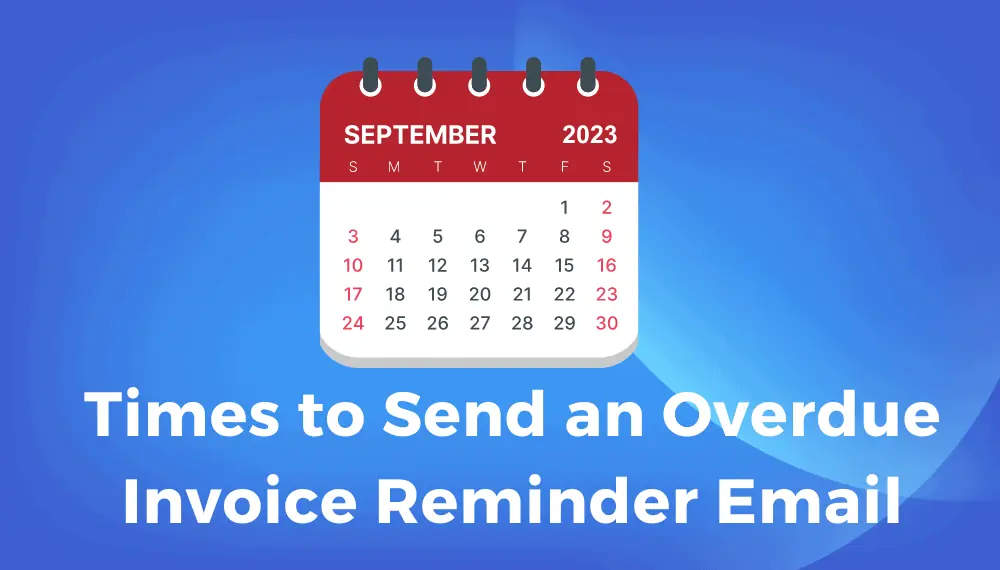
Sending timely and well-spaced overdue invoice reminder emails is crucial for maintaining a healthy cash flow and ensuring that your business receives payments on time. While it’s essential to maintain a professional and friendly tone in these communications, the timing of these reminders plays a significant role in maximizing the chances of receiving payment without damaging your client relationships. Here’s a comprehensive guide on when to send overdue invoice reminder emails:
In Advance Email: One Week Before the Payment Due Date
A proactive approach involves sending a friendly reminder to your clients one week before the payment due date. This not only serves as a gentle nudge but also allows clients to prepare for the upcoming payment and address any potential issues proactively.
Payment Due Email: On the Due Date
On the actual payment due date, send a concise email reminding the client that the payment is now due. This serves as a last-minute prompt and shows your commitment to keeping track of payments.
First Late Payment Reminder Email: One Week After the Payment Due Date Has Passed
If the payment remains outstanding one week after the due date, send the first late payment reminder. Approach the email with understanding, acknowledging that delays can happen, and offer assistance if needed.
Second Late Payment Email: Two Weeks After the Payment Due Date Has Passed
If the client has not responded to the first reminder, send a second late payment email after two weeks have passed. Politely reiterate the outstanding amount and payment options, and express your hope for a prompt resolution.
Third Late Payment Email: 30 Days After the Payment Due Date Has Passed
If the payment remains unpaid after 30 days, send a third late payment email. At this stage, you may want to include a gentle reminder of any late fees or consequences for further delays.
Fourth Late Payment Email: 60 Days After the Payment Due Date Has Passed
For invoices that are now 60 days overdue, send a fourth late payment email. At this point, you may want to escalate the urgency, mentioning the potential impact on the client’s credit rating or future business relations.
Fifth and Final Notice Email: 90 Days After the Payment Due Date Has Passed, But Before Collections
As a last resort, before initiating collections procedures, send a fifth and final notice email at the 90-day mark. Clearly state this is the final communication before you take further action to collect the debt.
Always keep records of all communication and ensure your email language remains professional, empathetic, and compliant with any relevant laws or regulations governing debt collection. By following this well-structured schedule of overdue invoice reminders, you demonstrate your commitment to clear communication and financial responsibility while maintaining a positive relationship with your clients.
Payment Reminder Email Templates
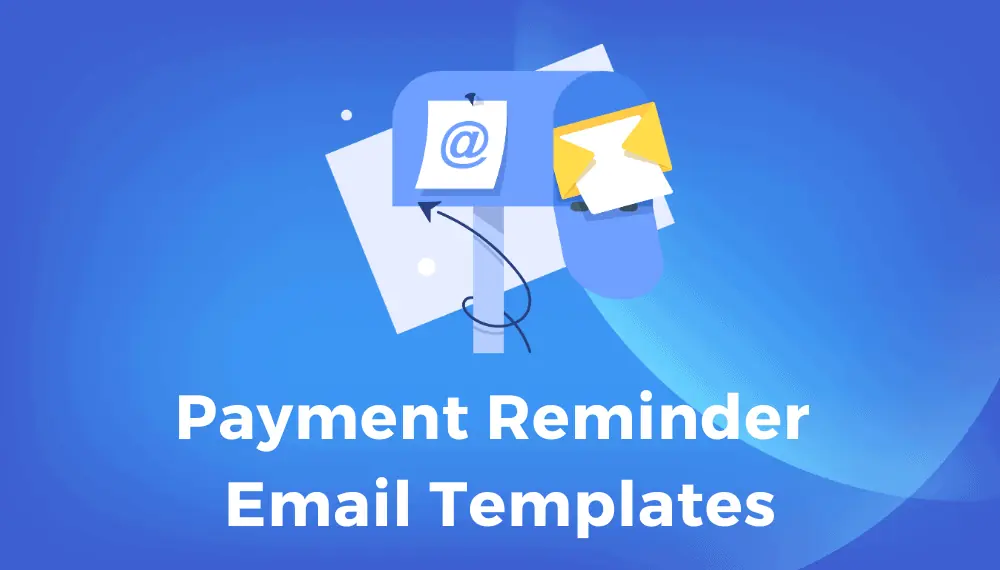
1. Due Date Upcoming: Send a Payment Reminder Email
Subject: Friendly Payment Reminder – Invoice [Invoice Number]
Dear [Client’s Name],
We hope this email finds you well. We want to express our gratitude for your continued support and the opportunity to serve you with our [Products/Services]. As the due date for Invoice [Invoice Number] is approaching on [Due Date], we kindly want to remind you about the pending payment.
Invoice Details:
Invoice Number: [Invoice Number]
Invoice Date: [Date of Issue]
Due Date: [Due Date]
Total Amount: [Total Amount]
Payment Options:
To facilitate a seamless payment process, we offer various payment methods, including online payment, bank transfer, and check payment. Please find the details below:
- Online Payment: [Provide a secure payment link]
- Bank Transfer: [Bank Name, Account Number, Routing Number]
- Check Payment: [Mailing Address]
We understand that unforeseen circumstances may arise, and we are more than willing to assist you if there are any concerns or questions regarding the invoice. If you have already made the payment, please accept our apologies for any inconvenience caused.
Thank you for your attention to this matter, and we look forward to receiving your payment on or before the due date. Should you require any further assistance, please feel free to reach out to our dedicated support team at [Contact Number] or [Email Address].
Best regards,
[Your Name]
[Your Title/Position]
[Your Company Name]
[Contact Information]
2. Due Date: Send a Payment Reminder Email
Subject: Payment Due Today – Invoice [Invoice Number]
Dear [Client’s Name],
We hope this email finds you in good spirits. As of today, [Due Date], the payment for Invoice [Invoice Number] is due. We sincerely appreciate your continued partnership and want to ensure your payment process goes smoothly.
Invoice Details:
Invoice Number: [Invoice Number]
Invoice Date: [Date of Issue]
Due Date: [Due Date]
Total Amount: [Total Amount]
Friendly Reminder:
This email serves as a gentle nudge to settle the outstanding amount. We understand that deadlines can sometimes slip our minds, so we’re here to provide any assistance or clarification you may need.
Payment Options:
For your convenience, we offer multiple payment options to help you make the payment with ease. You can choose from the following:
- Online Payment: [Provide a secure payment link]
- Bank Transfer: [Bank Name, Account Number, Routing Number]
- Check Payment: [Mailing Address]
Gratitude:
We value your business and the trust you’ve placed in us. Your timely payment enables us to continue delivering exceptional [Products/Services] to meet your needs effectively.
Please don’t hesitate to contact us at [Contact Number] or [Email Address] if you require any support or have any questions related to the payment.
Thank you for your prompt attention, and we look forward to receiving your payment today.
Best regards,
[Your Name]
[Your Title/Position]
[Your Company Name]
[Contact Information]
3. One Week Late: Send a Friendly Overdue Invoice Letter
Subject: Friendly Reminder: Overdue Invoice – [Invoice Number]
Dear [Client’s Name],
We hope this email finds you well. We genuinely value our partnership with you and your continued support. However, we noticed that the payment for Invoice [Invoice Number], which was due on [Due Date], remains outstanding.
Invoice Details:
Invoice Number: [Invoice Number]
Invoice Date: [Date of Issue]
Due Date: [Due Date]
Total Amount: [Total Amount]
Understanding Delays:
We understand that circumstances can sometimes lead to payment delays, and we are here to assist you. If there are any unforeseen challenges or if you require additional time to make the payment, please let us know so we can work together to find a suitable solution.
Payment Options:
To make the payment process convenient for you, we offer various payment methods, including:
- Online Payment: [Provide a secure payment link]
- Bank Transfer: [Bank Name, Account Number, Routing Number]
- Check Payment: [Mailing Address]
Maintaining a Positive Relationship:
At [Your Company Name], we value our clients and prioritize maintaining a positive working relationship. We hope this email serves as a gentle reminder, and we look forward to a prompt resolution.
Should you need any support or have any questions regarding the invoice or payment, please do not hesitate to contact us at [Contact Number] or [Email Address].
Thank you for your understanding, and we look forward to receiving your payment at your earliest convenience.
Best regards,
[Your Name]
[Your Title/Position]
[Your Company Name]
[Contact Information]
4. Two Weeks Late: Send a Late Payment Notice
Subject: Urgent: Overdue Payment Notice – Invoice [Invoice Number]
Dear [Client’s Name],
We hope this email finds you safe and well. As of today, Invoice [Invoice Number], which was due on [Due Date], remains unpaid for two weeks. It’s important to address this matter urgently to avoid any further complications.
Invoice Details:
Invoice Number: [Invoice Number]
Invoice Date: [Date of Issue]
Due Date: [Due Date]
Total Amount: [Total Amount]
Consequences of Delay:
We understand that circumstances can be challenging at times, but we must emphasize that the delay in payment can have implications on your account and may result in late fees.
Resolving the Outstanding Balance:
To settle the outstanding amount, we offer multiple payment options to choose from:
- Online Payment: [Provide a secure payment link]
- Bank Transfer: [Bank Name, Account Number, Routing Number]
- Check Payment: [Mailing Address]
Maintaining a Positive Relationship:
We value our partnership with you and are committed to working together towards a successful resolution. Should you have any concerns or require assistance, please do not hesitate to contact us at [Contact Number] or [Email Address].
Immediate Action Required:
We kindly request you to prioritize this payment and ensure that it is made as soon as possible. This will allow us to continue providing you with our exceptional [Products/Services].
Thank you for your prompt attention, and we look forward to receiving your payment promptly.
Best regards,
[Your Name]
[Your Title/Position]
[Your Company Name]
[Contact Information]
5. One Month Overdue: Overdue Payment Reminder
Subject: Urgent: Payment Overdue for One Month – Invoice [Invoice Number]
Dear [Client’s Name],
We hope this email finds you well. Regrettably, we must draw your attention to the long-standing overdue payment for Invoice [Invoice Number], which was due on [Due Date]. It has now been one month since the payment was originally due.
Invoice Details:
Invoice Number: [Invoice Number]
Invoice Date: [Date of Issue]
Due Date: [Due Date]
Total Amount: [Total Amount]
Impact of Delay:
The delay in payment has raised concerns, as it affects our ability to maintain seamless operations and deliver high-quality [Products/Services] to our valued clients like yourself.
Immediate Resolution Required:
We understand that circumstances can be challenging, but we urge you to address this matter urgently. Please make the payment immediately to avoid any further complications.
Payment Options:
To facilitate a swift payment process, we offer various payment methods, including:
- Online Payment: [Provide a secure payment link]
- Bank Transfer: [Bank Name, Account Number, Routing Number]
- Check Payment: [Mailing Address]
Maintaining Our Business Relationship:
At [Your Company Name], we cherish our business relationship with you and seek to resolve this matter amicably. If you require any support or wish to discuss a payment plan, please contact us at [Contact Number] or [Email Address].
Late Fees and Consequences:
Please be aware that continuous delay may result in late fees, and we may need to review our credit terms if the payment remains outstanding.
Thank you for your immediate attention to this matter, and we look forward to receiving your payment as soon as possible.
Best regards,
[Your Name]
[Your Title/Position]
[Your Company Name]
[Contact Information]
6. 60 Days Overdue: Send a Strong Letter for Outstanding Payment
Subject: Final Notice: Urgent Outstanding Payment for Invoice [Invoice Number]
Dear [Client’s Name],
We hope this email reaches you, and you are safe and well. Despite our previous reminders, we regret to inform you that the payment for Invoice [Invoice Number], which was due on [Due Date], remains unpaid and is now 60 days overdue.
Invoice Details:
Invoice Number: [Invoice Number]
Invoice Date: [Date of Issue]
Due Date: [Due Date]
Total Amount: [Total Amount]
Serious Implications:
We must emphasize that this outstanding payment has serious implications for our business operations and our ability to serve you and other clients effectively.
Immediate Payment Required:
To resolve this matter promptly, we request that you make the payment immediately. This will allow us to maintain our business relationship and continue delivering the exceptional [Products/Services] you expect from us.
Payment Options:
We offer several convenient payment methods for your ease:
- Online Payment: [Provide a secure payment link]
- Bank Transfer: [Bank Name, Account Number, Routing Number]
- Check Payment: [Mailing Address]
Reevaluate Credit Terms:
As per our company policy, consistent late payments may require us to reevaluate your credit terms in the future.
Assistance or Clarification:
Should you require any assistance, clarification or wish to discuss a payment plan, our dedicated support team is available to help. Please contact us at [Contact Number] or [Email Address].
Final Chance to Resolve:
This email serves as our final notice before we are forced to explore other means of collecting the outstanding payment.
We sincerely hope this matter can be resolved amicably and without further escalation.
Best regards,
[Your Name]
[Your Title/Position]
[Your Company Name]
[Contact Information]
7. 90 Days Overdue: Final Overdue Invoice Email
Subject: Urgent: Final Notice – Outstanding Payment for Invoice [Invoice Number]
Dear [Client’s Name],
We trust this email finds you well. Unfortunately, we must bring to your attention the severe and continued delay in the payment for Invoice [Invoice Number], which was due on [Due Date]. It has now been 90 days since the original payment due date.
Invoice Details:
Invoice Number: [Invoice Number]
Invoice Date: [Date of Issue]
Due Date: [Due Date]
Total Amount: [Total Amount]
Immediate Resolution Needed:
We cannot stress enough the urgency of this matter. We have attempted multiple times to resolve this issue amicably, but the outstanding payment remains unresolved.
Final Opportunity to Settle the Debt:
This email serves as our last attempt to resolve this matter before we initiate collections proceedings. We genuinely hope it doesn’t come to that, as we value our business relationship and wish to avoid any adversarial actions.
Implications of Non-Payment:
Failure to settle the outstanding amount may result in additional collection fees, legal action, or reporting the delinquency to credit bureaus.
Payment Options:
To avoid these consequences, we urge you to make the payment immediately. We offer various payment methods for your convenience:
- Online Payment: [Provide a secure payment link]
- Bank Transfer: [Bank Name, Account Number, Routing Number]
- Check Payment: [Mailing Address]
Seeking Resolution:
Should you have any questions, concerns or wish to discuss a payment plan, please contact us immediately at [Contact Number] or [Email Address]. We are committed to finding a resolution that works for both parties.
Final Chance for Resolution:
This email marks our final attempt to resolve this matter before we explore other options to collect the outstanding payment.
Thank you for your immediate attention to this matter, and we hope to receive your payment without further delay.
Best regards,
[Your Name]
[Your Title/Position]
[Your Company Name]
[Contact Information]
Overall, using well-crafted payment reminder email templates at different stages of an overdue payment ensures timely communication with clients and demonstrates your professionalism and commitment to maintaining a positive business relationship.
Different Ways to Send a Past Due Notice
Sending a past due notice is essential to remind clients or customers about outstanding payments. Depending on your preference and the urgency of the situation, here are several different ways to send a past due notice:
Sending a past due notice via email is a quick and efficient method. You can use a friendly and professional tone in the email, include the invoice details, the amount due, and the new payment deadline.
Physical Letter
Mailing a past due notice as a physical letter can add a personal touch. Use a formal letter format, and consider using colored or branded stationery to make it stand out.
Phone Call
For more urgent situations or high-value accounts, consider making a phone call to remind the client about the overdue payment. Maintain a polite and courteous tone while discussing the outstanding amount.
Text Message
If you have a more informal relationship with the client or the amount due is relatively small, a brief text message reminder might suffice. Ensure the message is clear and includes the essential details.
Invoice Stickers or Notes
Include a past due notice as a sticker or a handwritten note on the next invoice you send. This way, the client will immediately notice the reminder when receiving the new invoice.
In-Person Visit
For local clients or customers, consider making an in-person visit to discuss the overdue payment. Always ensure you maintain a professional demeanor and follow local regulations and cultural norms.
Messaging Apps
If you have established communication channels with your clients through messaging apps like WhatsApp or Slack, you can send a past due notice through these platforms. However, ensure you prioritize privacy and security.
Online Account Portal
If your business operates an online account portal for clients, use this platform to display past due notices when clients log in to manage their accounts.
Certified Mail
In cases where you need proof of delivery, such as in legal or formal matters, consider sending a past due notice via certified mail, which provides a receipt confirming delivery.
When sending past due notices, always remain professional and empathetic. Avoid using threatening or confrontational language, as it may damage the client relationship. Instead, focus on clear communication, providing payment options if necessary, and reiterating your willingness to assist with any concerns or questions they may have about the outstanding payment.
What To Do if a Customer Doesn’t Respond to a Past Due Invoice Email?
When a customer doesn’t respond to a past due invoice email, it can be concerning and frustrating for a business. However, it’s essential to approach the situation carefully and follow these steps:
- Send a Follow-Up Email: If the customer hasn’t responded to the initial past due invoice email, send a gentle follow-up email as a reminder. Keep the tone professional and friendly, reiterating the details of the outstanding invoice and the importance of timely payment.
- Call the Customer : Consider making a phone call to the customer to discuss the overdue payment. A phone call can be more personal and might prompt a response from the customer. During the call, remain polite and understanding, and be prepared to address any concerns or questions they may have.
- Offer Flexible Payment Options: In your follow-up email or phone call, be willing to offer flexible payment options if the customer is facing financial difficulties. This could include setting up a payment plan or extending the payment deadline, if feasible.
- Send a Physical Letter: If the customer is still unresponsive, send a formal letter via mail as a final notice. Include all relevant invoice details and the consequences of continued non-payment. Mention the possibility of additional fees or taking further action if the payment is not received promptly.
- Follow Company Policy: Ensure you are following your company’s policies regarding overdue payments. Be aware of any late payment fees or penalties that may apply, and communicate them clearly to the customer.
- Consider Engaging a Collection Agency: If all attempts to communicate with the customer fail, and the payment remains outstanding for an extended period, you may consider engaging a collection agency. Collection agencies specialize in recovering overdue payments but be aware that this may negatively impact your relationship with the customer.
- Seek Legal Advice: In extreme cases where the overdue payment is significant, you may need to consult with a lawyer to explore legal options for recovering the debt. This should be considered as a last resort, as legal action can be time-consuming and costly.
- Learn from the Experience: Use the situation as a learning experience to improve your invoicing and payment processes. Review your payment terms, the clarity of your invoices, and the effectiveness of your communication with customers regarding payments.
Remember, communication is key when dealing with overdue payments. Always remain professional, patient, and understanding while seeking a resolution. Building and maintaining positive relationships with your customers is crucial for the long-term success of your business.
How to Avoid Late Payments
Preventing late payments is vital for the financial health and stability of a business. Here are effective strategies to ensure timely payments
- Clear and Transparent Invoicing : Create well-structured invoices that clearly outline the payment terms, due date, and accepted payment methods. Make it easy for clients to understand when and how to make payments.
- Set Clear Payment Terms: Establish clear and agreed-upon payment terms with your clients before commencing any work. Clearly communicate the payment due date and any discounts or penalties for early or late payments.
- Automation: Implement a systematic approach to send payment reminders to clients a few days before the due date. Use automation tools or accounting software to streamline this process.
- Offer Multiple Payment Options: Provide clients with various convenient payment options, such as online payments, credit/debit cards, bank transfers, and checks. This flexibility encourages prompt payments.
- Incentivize Early Payments: Offer incentives for clients who make early payments, such as discounts or loyalty rewards. This encourages clients to prioritize settling their invoices promptly.
- Establish a Late Payment Policy: Clearly outline the consequences of late payments in your late payment policy. This may include late fees, interest charges, or the suspension of services until payment is received.
- Conduct Credit Checks: For significant transactions or new clients, conduct credit checks to assess their financial reliability and creditworthiness.
- Maintain Open Communication : Foster transparent and open communication with clients. Address any payment concerns or difficulties promptly and collaboratively seek solutions if needed.
- Build Strong Client Relationships: Strengthen relationships with clients by providing excellent customer service and building trust. Clients are more likely to prioritize payments to businesses they trust and value.
- Monitor Accounts Receivable: Regularly monitor accounts receivable to stay on top of outstanding payments. Use accounting software to track payment statuses and promptly address overdue invoices.
By implementing these strategies, businesses can significantly reduce the risk of late payments, improve cash flow, and maintain positive client relationships. Consistent communication, clear payment terms, and offering convenience to clients all contribute to a more successful and financially stable business.
Conclusion
In conclusion, crafting a friendly payment reminder email or letter is a powerful tool for ensuring timely payments while maintaining a positive and professional relationship with clients. By following the guidelines presented in this article, such as using a courteous tone, providing clear payment details, and offering assistance if needed, businesses can effectively communicate the importance of settling outstanding invoices without causing discomfort to the recipients.
Incorporating technology and automation also streamlines the process, making it easier to send timely reminders. The art of creating a friendly payment reminder demonstrates respect for clients’ time and commitment to providing exceptional products or services.
Employing these strategies not only increases the likelihood of receiving payments promptly but also fosters goodwill and loyalty, contributing to a thriving and successful business in the long run.
![]() Recommended reading: Cold Emailing Templates That Increase Response By 1000%
Recommended reading: Cold Emailing Templates That Increase Response By 1000%
Frequently Asked Questions (FAQs)
When should I send a payment reminder email?
It's best to send a payment reminder email a few days before the payment due date as a proactive approach. Additionally, consider sending follow-up reminders at specific intervals after the due date has passed, such as one week, two weeks, and one month late.
How should I address the client in the reminder email?
Use a friendly and professional tone, addressing the client by their name or business name. Avoid using overly formal or confrontational language to maintain a positive relationship.
What should I include in the payment reminder email?
Include essential details, such as the invoice number, the total amount due, the payment due date, accepted payment methods, and a clear call-to-action for making the payment.
How can I offer payment assistance if the client is facing financial difficulties?
In the payment reminder email, express understanding and willingness to help. Offer options like setting up a payment plan or discussing an extension if necessary.
Can I include late payment fees in the reminder email?
Yes, you can mention any applicable late payment fees or penalties in the reminder email. Ensure these fees are clearly communicated in your payment terms or late payment policy.
How should I handle clients who frequently make late payments?
For clients with a history of late payments, consider having a candid conversation about the importance of timely payments and the impact it has on your business. Discuss potential solutions to prevent future delays.
Is it appropriate to send a final notice email?
Yes, sending a final notice email is acceptable if the payment is significantly overdue. However, ensure the language remains courteous and professional, emphasizing the importance of resolving the payment promptly.

